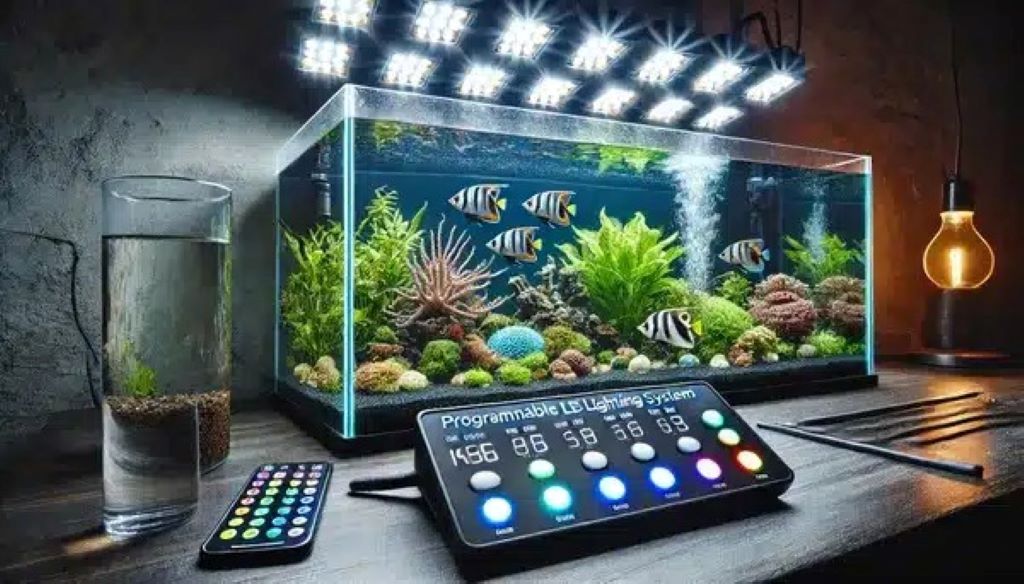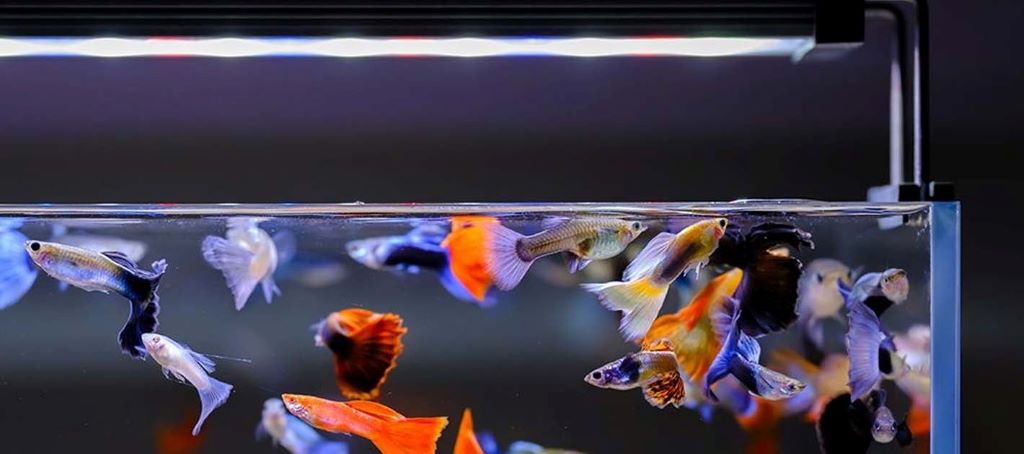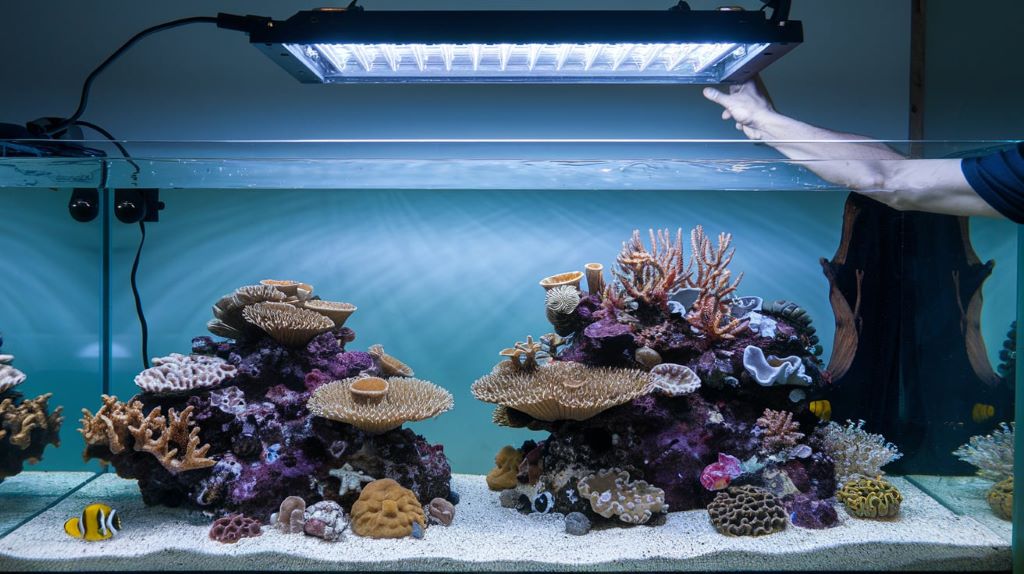Introduction:
A thriving aquarium is a captivating spectacle, a miniature underwater world teeming with life and vibrant colors. While healthy fish naturally display beautiful hues, the right lighting can dramatically enhance their appearance, making your aquarium a truly mesmerizing focal point. This comprehensive guide delves into the fascinating interplay of light and color in the aquatic realm, providing you with the knowledge to illuminate your aquarium in a way that maximizes the visual impact of your fish. Specifically, we’ll explore how to enhance fish colors with the right lighting, ensuring your underwater companions shine in all their glory.
The Science of Color Perception in Fish:
Before we dive into the specifics of aquarium lighting, it’s crucial to understand how fish perceive color. Unlike humans who have trichromatic vision (seeing red, green, and blue), most fish possess tetrachromatic vision, enabling them to see ultraviolet light in addition to the colors we perceive. This means they perceive a broader spectrum of colors than we do, and their colors appear even more vivid in their underwater world.
Furthermore, fish coloration serves various purposes, including camouflage, communication, and mate attraction. Pigments in their skin reflect specific wavelengths of light, creating the colors we see. By understanding these principles, we can strategically use lighting to emphasize these natural colors and even bring out hidden hues.
The Impact of Lighting on Fish Coloration:
Light plays a pivotal role in how we perceive the colors of our aquarium fish. Different light spectrums emphasize different colors, and the intensity of the light can also affect how vibrant the colors appear.
- Color Temperature: Measured in Kelvin (K), color temperature describes the appearance of light. Lower Kelvin ratings (2,700-3,000K) produce warm, yellowish light, while higher ratings (6,500-10,000K) emit cooler, bluish light. Warmer light tends to enhance red and orange tones in fish, while cooler light brings out blues and greens.
- Color Rendering Index (CRI): CRI measures how accurately a light source renders colors compared to natural sunlight. A higher CRI (90+) indicates better color accuracy, making the colors of your fish appear more natural and vibrant.
- Light Intensity: The intensity of light, measured in lumens or PAR (Photosynthetically Active Radiation), also influences color perception. While adequate light is essential for fish health and plant growth, excessively bright light can wash out colors, while dim lighting may make them appear dull.
Choosing the Right Lighting for Your Aquarium:

Selecting the appropriate lighting is crucial for showcasing the beauty of your fish. Consider the following factors:
- Fish Species: Research the natural habitat and color patterns of your fish. Some species, like African cichlids, thrive in bright, warm light, while others, such as South American tetras, prefer dimmer, cooler conditions.
- Aquascaping: The arrangement of plants, rocks, and wood in your aquarium can influence lighting choices. Densely planted tanks may require more powerful lighting to reach the lower levels, while open aquascapes offer more flexibility.
- Personal Preference: Ultimately, the best lighting is the one that appeals to your aesthetic sensibilities. Experiment with different color temperatures and intensities to find the look you love.
Types of Aquarium Lighting:
A variety of lighting options are available for aquariums, each with its own advantages and disadvantages:
- Fluorescent Lighting: Once the most common type, fluorescent tubes offer good energy efficiency and a decent CRI. However, they tend to lose intensity over time and may not provide the optimal spectrum for plant growth or color enhancement.
- LED Lighting: LEDs have revolutionized aquarium lighting, offering superior energy efficiency, longevity, and customizable color spectrums. They are available in various forms, including tubes, strips, and spotlights, allowing for precise control over lighting intensity and color temperature.
- Metal Halide Lighting: These powerful lights produce intense, bright light with excellent color rendering. They are often used for large aquariums or those with demanding plant species. However, they generate significant heat and consume more energy than other options.
Optimizing Lighting for Color Enhancement:
To truly bring out the best colors in your fish, consider these additional tips:
- Use a Combination of Light Sources: Combining different types of lighting, such as LEDs and fluorescent tubes, can create a more balanced spectrum and enhance color vibrancy.
- Adjust Lighting Intensity Gradually: Sudden changes in lighting can stress fish. When introducing new lighting or changing settings, do so gradually over several days.
- Provide a Day-Night Cycle: Fish thrive on a regular day-night cycle. Use a timer to automate your lighting schedule, providing 10-14 hours of daylight and 10-14 hours of darkness.
- Maintain Clean Water: Crystal-clear water ensures optimal light penetration and enhances color perception. Regular water changes and proper filtration are essential.
- Consider Background Color: The color of your aquarium background can influence how light reflects and affects fish coloration. Darker backgrounds tend to make colors appear more vibrant.
Popular FAQs about Aquarium Lighting and Fish Color:
-
Can I use regular household bulbs for my aquarium?
No, regular household bulbs are not designed for aquarium use. They lack the specific spectrums needed for fish health and plant growth and may not be waterproof.
-
How often should I replace my aquarium lights?
The lifespan of aquarium lighting varies depending on the type. Fluorescent tubes typically need replacement every 6-12 months, while LEDs can last for several years.
-
Will too much light harm my fish?
Excessive light can cause stress, algae overgrowth, and even sunburn in some fish. It’s crucial to provide appropriate lighting levels for your specific fish species and aquarium setup.
-
Can I leave my aquarium lights on all the time?
No, fish need a regular day-night cycle for their well-being. Constant light can disrupt their sleep patterns and lead to stress.
-
How can I reduce algae growth caused by excessive lighting?
Algae growth can be controlled by reducing lighting duration, performing regular water changes, and using algae-eating creatures like snails or shrimp.
Conclusion:
Lighting is a powerful tool for enhancing the beauty of your aquarium fish. By understanding the science of color perception and choosing the right lighting setup, you can create a dazzling underwater world that showcases the vibrant hues of your aquatic companions. Remember to consider the specific needs of your fish species, maintain a regular day-night cycle, and keep your water clean for optimal results. With careful planning and attention to detail, your aquarium can become a captivating masterpiece, a testament to the fascinating interplay of light and life.
Read More:
Best Reef Tank LEDs: Guide for Softies, LPS & SPS Corals
Aquarium Lighting: Mimicking Nature’s Rhythm for a Thriving Underwater World




